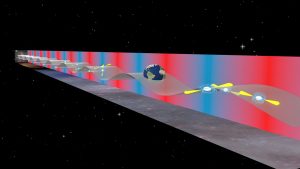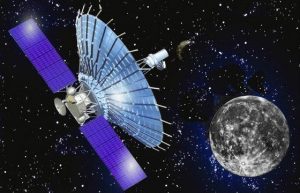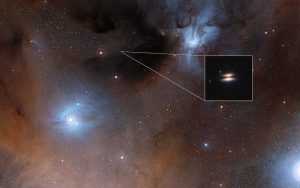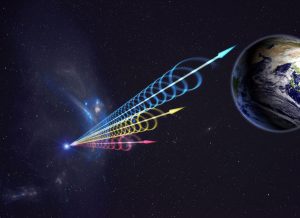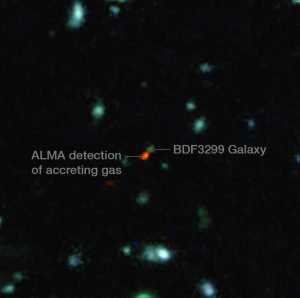NANOGrav provides insights into galaxy mergers.
Earth-Space Telescope System Produces Hot Surprise
Astronomers using an orbiting radio telescope in conjunction with four ground-based radio telescopes have achieved the highest resolution, or ability to discern fine detail, of any astronomical observation ever made.
The Frigid Flying Saucer
ALMA finds unexpectedly cold grains in planet-forming disk
‘Fast Radio Burst’ Sheds New Light on Origin of These Extreme Events
Clues to origin of Fast Radio Burst mined from GBT data.
ALMA Detects Star-Forming Clouds in Normal Galaxy in Early Universe
Astronomers using ALMA detected the most distance star-forming clouds in normal galaxies in the early Universe.
Complex Organic Molecules Discovered in Infant Star System
Using ALMA, astronomers for the first time have discovered complex organic molecules in a protoplanetary disk.






